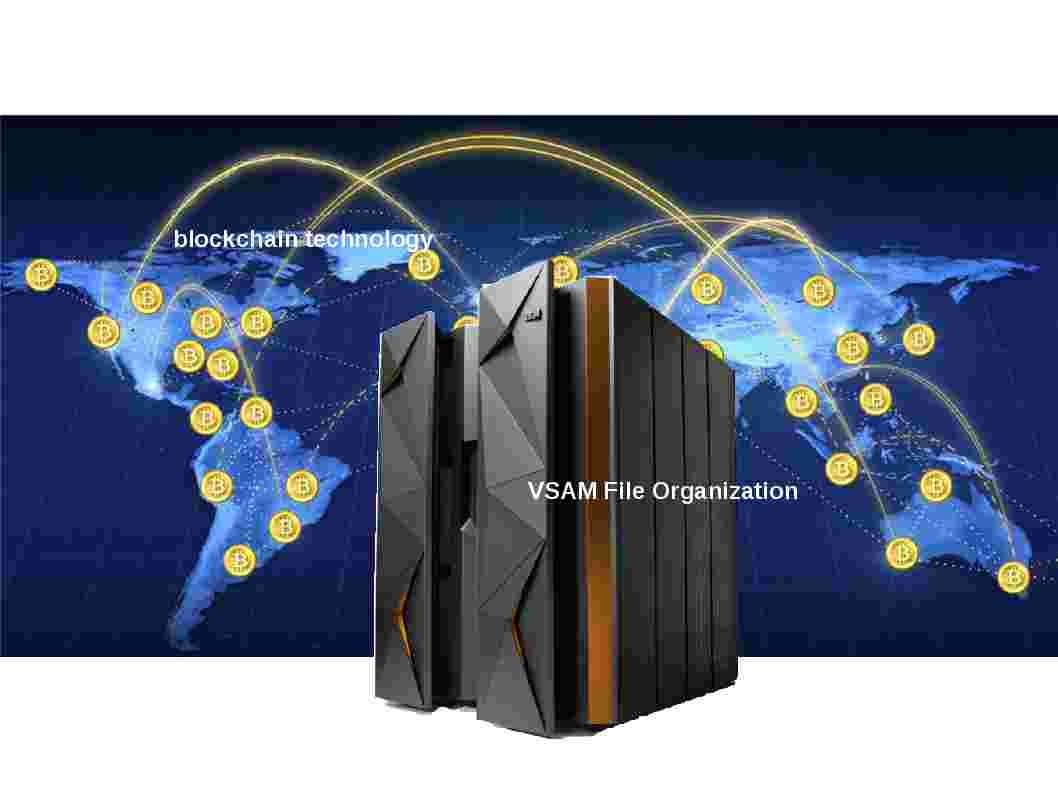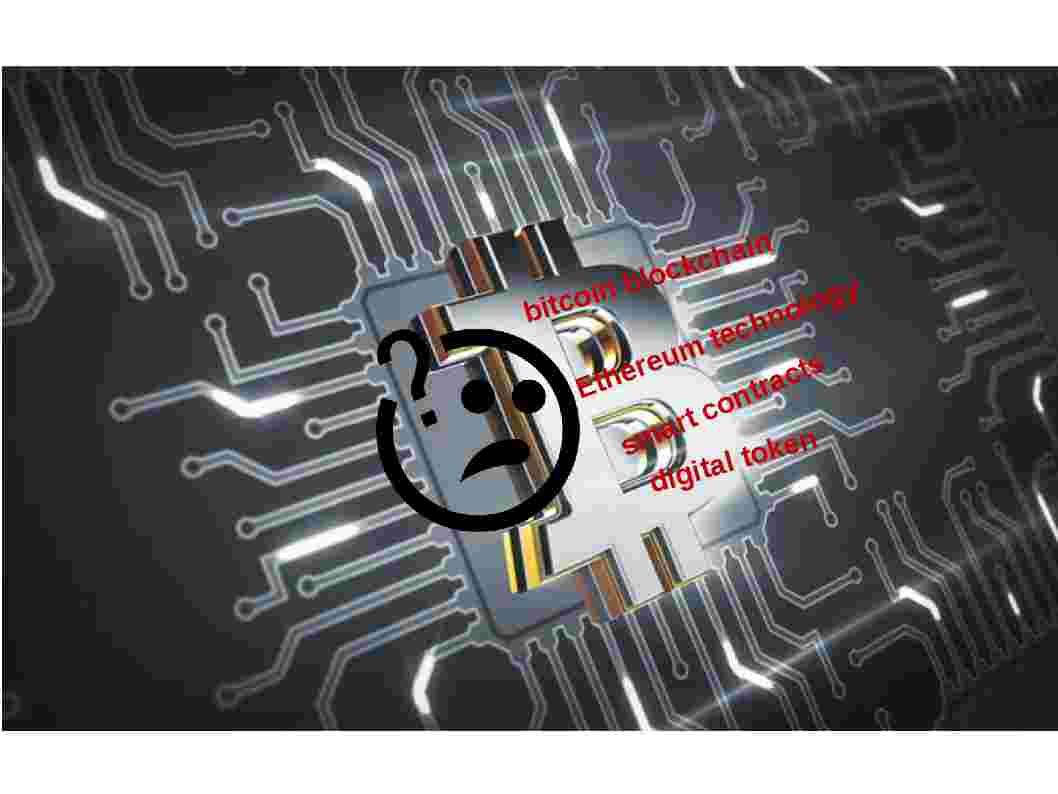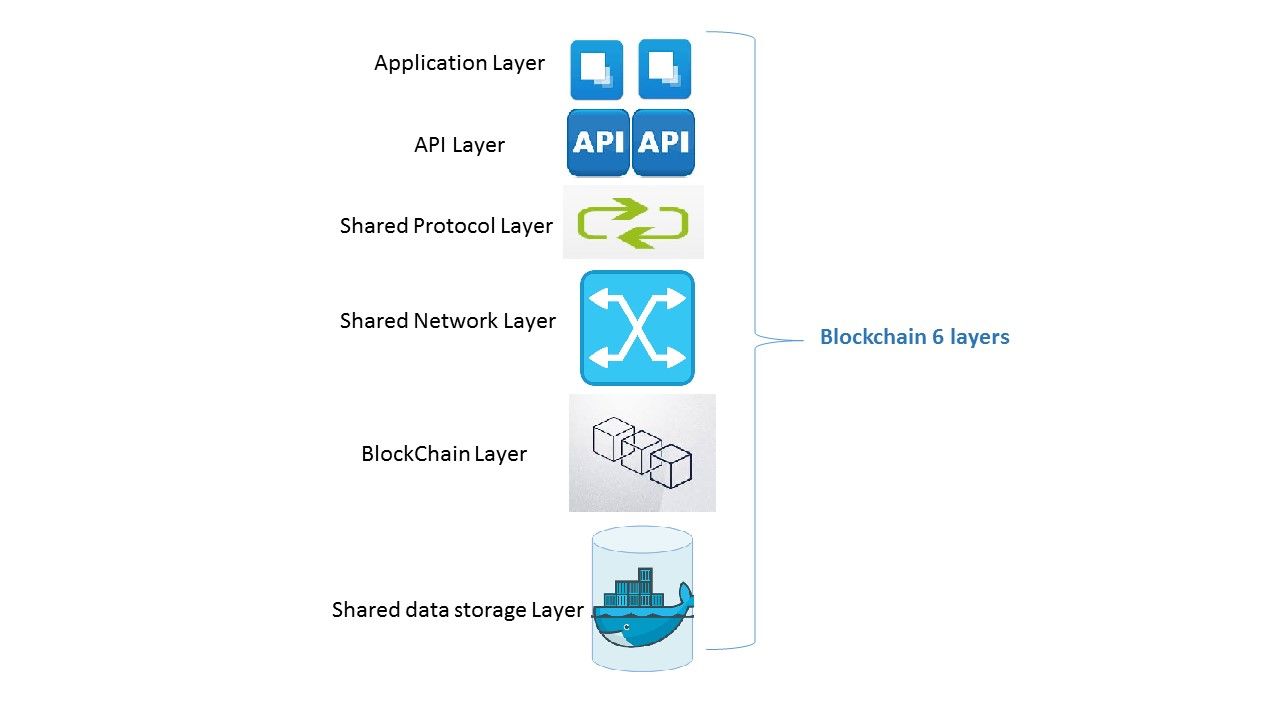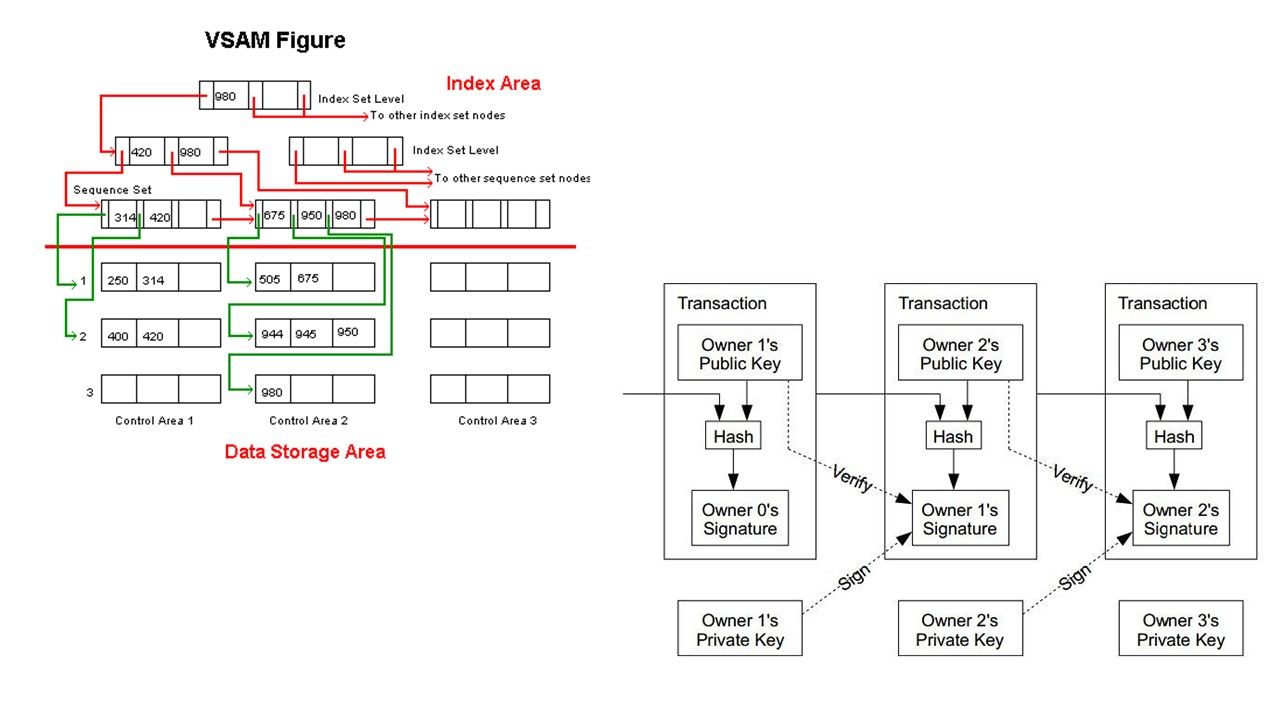
Old school boy might remember fundamental of Virtual storage access method (VSAM). I object, banking and financial institution are close with VSAM technologies day to day. Yes, they are using mainframe computer. For instance IBM S390. People discontentment of proprietary payment solution (SWIFT) sounds high! Hackers targeted payment system via the SWIFT, no significant figures show the security weakness of traditional payment system (SWIFT). Do you think the exploit come from fundamental design or it is the operation weakness? The block chain technology (bitcoins) carry out challenge to traditional payment method. For sure that it is a long run of competition. It includes intangible factors. Example: political, conflict of interest on business side, renovation of traditional payment culture,…etc.
Descendant of VSAM File structure,that is blockchain conceptual technology today
Blockchain technology – who is who?

Blockchain technology confusing me! What is bitcoin blockchain? Or it is Ethereum technology? But heard that there is another digital currencies or digital token. Oh! my god, still have smart contracts! Find the answer conclude that it is list of transactions that is replicated across a number of computers.
i. Blockchain keep track of a currency’s balances.Since it is a decentralized networks, blockchain does not have a central point of failure and is better able to avoid malicious attacks.
ii. Ethereum is an public blockchain-based distributed application platform featuring smart contract functionality.
iii. A smart contract is a digitally signed, computable agreement between two or more parties. A virtual third party work as software agent to execute and enforce at least some of the terms of such agreements.
iv. Digital tokens being used to represent different assets on a blockchain.
The overall opinion of people feel that BlockChain technologies are advanced compare with traditional payment method. See below diagram, the layering architecture of blockchain not special. If you take a closer look and focus in blockchain and share data storage layer. You will feel that blockchain design concept like IBM Mainframe VSAM file organization structure.

From design point of view, VSAM structure consists of tables, columns, primary keys, indexes, stored procedures, and views (refer to below left hand side diagram). When a direct READ is performed for a VSAM indexed file, based on an alternate index for which duplicates exist, only the first record in the data set (base cluster) with that alternate key value is retrieved. You need a series of READ NEXT statements to retrieve each of the data set records with the same alternate key.
How about block chain design structure? The terminology so called terms includes Transactor, Transaction, Ledger,World stat, Chaincode, Validating peer, Non-validating peer, Consensus and Permissioned network (refer to below right hand side diagram).
Descendant of VSAM File Organization,that is blockchain technology today.

Blockchain Key terms (copy from IBM Bluemix Docs)
The following terms are instrumental in gaining a holistic understanding of blockchain concepts:
Transactor: A network participant connected to the blockchain network through a node, who submits transactions from a client using an SDK or API.
Transaction: A request by a transactor to execute a function on the blockchain network. The transaction types are deploy, invoke, and query, which are implemented through the chaincode functions set forth in the fabric’s API contract.
Ledger: A sequence of cryptographically-linked blocks, containing transactions and the current world state. In addition to data from previous transactions, the ledger also contains the data for currently-running chaincode applications.
World state: Key-value database used by chaincodes to store their state when executed by a transaction.
Chaincode: Embedded logic that encodes the rules for specific types of network transactions. Developers write chaincode applications and deploy them to the network. End users then invoke chaincode through a client-side application that interfaces with a network peer, or node. Chaincode runs network transactions, which if validated, are appended to the shared ledger and modify world state.
Validating peer: A network node that runs the consensus protocol for the network to validate transactions and maintain the ledger. Validated transactions are appended to the ledger, in blocks. If a transaction fails consensus, it is purged from the block and therefore, not written to the ledger. A validating peer (VP) has authority to deploy, invoke and query chaincode.
Non-validating peer: A network node that functions as a proxy, connecting transactors to validating peers. A non-validating peer (NVP) forwards invocation requests to its connected validating peer (VP). It also hosts the event stream server and the REST service.
Consensus: A protocol that maintains the order of blockchain network transactions (deploy and invoke). Validating nodes work collectively to approve transactions by implementing the consensus protocol. Consensus ensures that a quorum of nodes agree on the order of transactions on the shared ledger. By resolving any discrepancies in this order, consensus ensures that all nodes operate on an identical blockchain ledger. See the consensus topic for more information and test cases.
Permissioned network: A blockchain network where each node is required to maintain a member identity on the network, and each node has access to only the transactions that its permissions allow.
For readers who are interested of block chain technology. Please refer below url for reference.
About blockchain (IBM Bluemix Docs)
https://console.ng.bluemix.net/docs/services/blockchain/ibmblockchain_overview.html
Merry Christmas!

Service Unavailable
The server is temporarily unable to service your request due to maintenance downtime or capacity problems. Please try again later.
Additionally, a 503 Service Unavailable error was encountered while trying to use an ErrorDocument to handle the request.